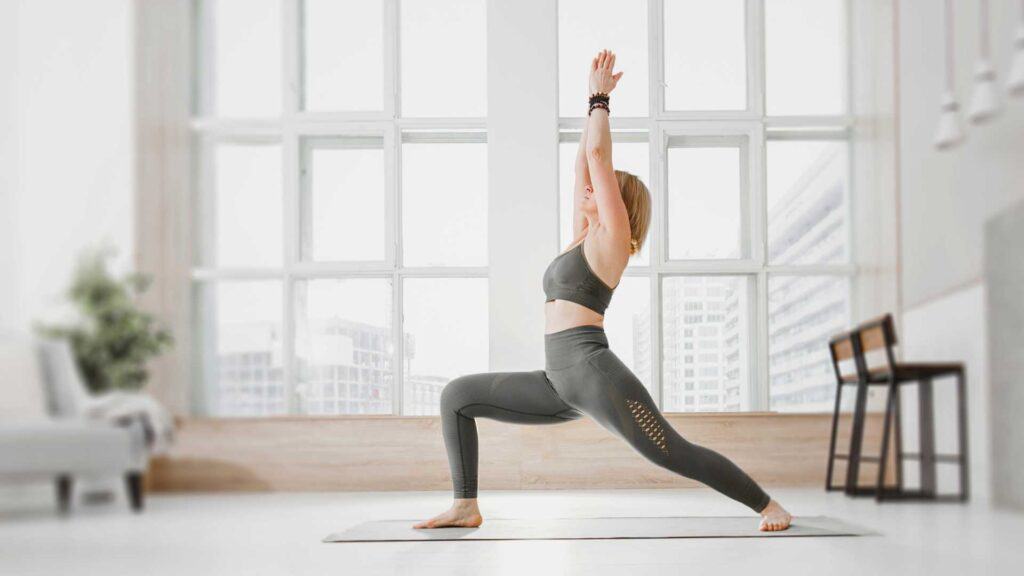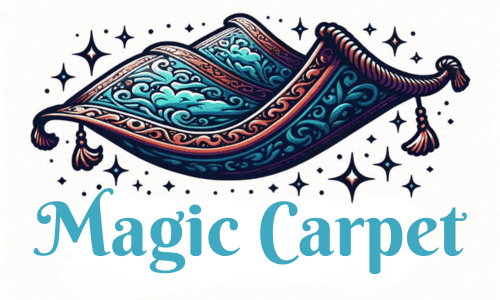When exploring the vast world of yoga, you may encounter a web of styles, each with distinctive features and philosophies.
Among these styles, Ashtanga and Vinyasa stand out as prominent practices favored by many yogis around the globe.
You might consider Ashtanga yoga a traditional, structured type of yoga that includes a fixed series of poses. It focuses on synchronizing breath and movement to build heat and endurance.
Each session usually lasts 60 to 90 minutes and follows the same sequence, making it a consistent and disciplined practice.

On the other hand, Vinyasa yoga offers more diversity and creativity in its approach. Often referred to as “flow” yoga, it emphasizes the fluid transition between postures, with the breath acting as an anchor for your movements.
Vinyasa sequences are not set in stone and can vary from class to class with different focuses, allowing for shorter practice if needed.
This variability makes Vinyasa an attractive option for those who seek variety in their yoga routine or who wish to tailor their practice to their time constraints and skill level.
Key Takeaways
- Ashtanga yoga is a methodical style with a set sequence, aligning breath with movements.
- Vinyasa yoga is fluid and diverse, with no fixed series of poses, and adaptable to individual needs.
- Both styles offer unique benefits and can cater to personal preferences and goals in a yoga practice.
Origins and Philosophy
In exploring the origins and philosophy of Ashtanga Yoga and Vinyasa Yoga, you’ll uncover their deep historical roots and the core principles that define their practice today.
Historical Roots and Texts
Ashtanga Yoga traces back to the “Yoga Korunta,” an ancient text attributed to Vamana Rishi. This text significantly influenced the modern Ashtanga Yoga system, which Sri K. Pattabhi Jois developed in the 20th century. It emphasizes a preset series of poses. Jois’s teacher, T. Krishnamacharya, had access to this ancient text, which helped shape Jois’s later teachings.
Vinyasa Yoga, while echoing the principles of Hatha Yoga, was greatly influenced by Krishnamacharya as well, making it a more contemporary practice. It integrates the breath with fluid movement and can be considered an evolution of traditional yoga practices.
Core Principles and Goals
The framework for Ashtanga Yoga is heavily based on the “eight limbs of yoga” (Ashtanga translates to “eight limbs”) outlined in Patanjali’s Yoga Sutras.
Created around 400 CE, the Yoga Sutras serve as a foundational text for all yoga styles:
- Yama: ethical disciplines
- Niyama: observances
- Asana: postures
- Pranayama: breath control
- Pratyahara: sensory withdrawal
- Dharana: concentration
- Dhyana: meditation
- Samadhi: state of ecstasy
In Ashtanga, these stages are pursued through a set sequence of postures. Vinyasa Yoga adopts the synchronization of breath and movement. It applies these principles flexibly, often not adhering to a specific sequence but aiming to achieve the union of body, breath, and mind.
Key Difference Between Ashtanga and Vinyasa Yoga

You’ll find distinct practices and approaches to sequence and flow in exploring the worlds of Ashtanga and Vinyasa yoga. Understanding these characteristics will help you pick the style that aligns with your needs.
Ashtanga Yoga Classes
Ashtanga Yoga presents a structured sequence of poses that you’re meant to follow in a precise order.
When you practice Ashtanga yoga, it is divided into six series, from the Primary to the Advanced series. The series are designed to increase in difficulty progressively.
You’ll typically spend about 60 to 90 minutes to complete a session. The key aspects of Ashtanga yoga include:
- Disciplined and methodical approach
- Detailed focus on breath (Ujjayi)
- Set series of sequences that seldom vary
- Emphasis on mastering a pose before moving to the next
Vinyasa Yoga Classes
In contrast, Vinyasa Yoga is characterized by its creative sequences, in which poses flow from one to another and are connected through breath.
The term “Vinyasa” refers to the synchronization of movement and breath, creating a dynamic flow.
Classes often vary and are typically shorter, lasting 30 to 60 minutes. Features of Vinyasa yoga also include:
- A more varied pose sequence
- Emphasis on the fluidity of the Vinyasa flow
- Accessibility for beginners due to shorter session lengths and adaptable poses
- A practice that often reflects the instructor’s style
Differences in Practice

When you step into an Ashtanga or Vinyasa yoga class, you’ll notice distinctly different styles of yoga in how each practice unfolds. From the structure of their sequences to the pace of their flows, these styles cater to different preferences and goals.
Sequence Structure
In an Ashtanga class, you engage in a set sequence of poses that are precisely the same every time. This disciplined structure is split into six series, each with specific postures meant to be executed in order.
On the other hand, a vinyasa class offers more variety; no two classes are exactly alike. In Vinyasa, instructors can sequence the poses differently, allowing creative interpretation and adaptation.
Pace and Flow
Your experience with the pace and flow also differs significantly between these disciplines.
Ashtanga practice is conducted deliberately, synchronizing each movement with breath in a method known as ‘vinyasa.’
However, the term ‘vinyasa’ in a Vinyasa class has a broader interpretation—it refers to a fluid connection between poses, often resulting in a quicker and more dynamic session.
Teaching Methods and Environment
During an Ashtanga session, teachers may not offer as much verbal instruction entry by entry. Instead, they provide hands-on guidance and adjustments, emphasizing the importance of self-focusing and memorizing the sequence.
Vinyasa instructors, by contrast, tend to guide you verbally through each transition and pose, which can be inherently more flexible and open to personal interpretation. This can result in a Vinyasa environment that feels more exploratory and varies from class to class.
Benefits and Suitability

Exploring Ashtanga and Vinyasa yoga, you’ll uncover unique benefits and suitability aspects that cater to different levels of yoga experience and personal preferences.
Physical and Mental Benefits of Ashtanga vs Vinyasa Yoga
Benefits of Ashtanga Yoga:
- Physical Strength: Regular Ashtanga yoga practice significantly enhances your strength and endurance due to its demanding postures and sequences.
- Mental Clarity: Emphasis on breath and movement coordination promotes a focused and meditative state, contributing to mental clarity and stress reduction.
Vinyasa Yoga:
- Flexibility: Flowing from one pose to another improves flexibility and agility.
- Variety: The diversity in sequences keeps the practice fresh and can stimulate mental engagement and creativity.
Which Type of Yoga is Right for Beginners?
- Ashtanga Yoga: This form of yoga may be more challenging for a novice due to its structured and intense sequences. However, seeking discipline and a methodical approach to practicing yoga is beneficial.
- Vinyasa Yoga: If you’re new to yoga, Vinyasa may be a better start due to its adaptable nature. The flexibility in sequences allows for modifications that can better accommodate your individual skill level.
Choosing Between Vinyasa and Ashtanga Yoga

When considering Ashtanga versus Vinyasa Yoga, your fitness level, yoga experience, and individual preferences play pivotal roles. This section guides you through understanding your body’s needs and finding the appropriate setting to begin or deepen your practice.
Listening to Your Body
Before starting any new exercise regimen like Ashtanga or Vinyasa Yoga, pay close attention to what your body tells you.
Ashtanga Yoga is known for its rigorous and structured series of poses, which can be physically demanding. It is a solid choice if you seek consistency and a challenge.
If you’re new to Ashtanga or yoga altogether, it’s important to ease into the practice to prevent injury.
On the other hand, Vinyasa Yoga offers a more fluid experience that can be modified to suit a wide range of abilities and can be a better fit if you prefer variety and creative sequences in your workouts.
Finding the Right Yoga Studio or Teacher
Choosing the right yoga studio or yoga instructor can make a significant difference in your yoga journey.
- Research Local Studios: Look for studios that offer the style of yoga you’re interested in. You might want to consider the size of classes, the availability of novice sessions, and the studio’s approach to practice. Studio Features Ashtanga Vinyasa Class Size Small for personal focus Larger for group energy Level Accommodation Beginner series offered All-level classes common Practice Approach Traditional sequence Creative and adaptive
- Meet Instructors: When you’ve narrowed down potential studios, try to meet the instructors. A good yoga instructor will be patient, attentive, and know how to guide students of all levels. If you’re aiming for yoga teacher training, look for instructors with a strong track record in training new teachers.
Further Reading
Find out the differences between Yin and Restorative Yoga.
